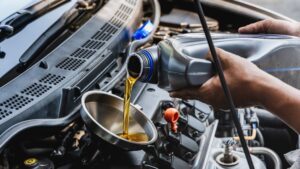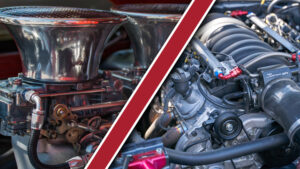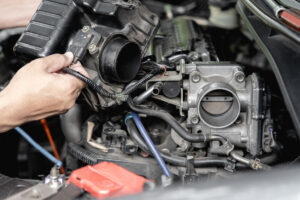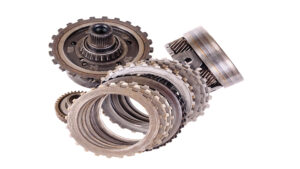6 Common Reasons Your Engine Fails
Besides buying a home, vehicles are one of the largest purchases we’ll make in our lifetime, so it’s crucial to take these simple and necessary steps of protecting that investment with manageable routine maintenance.
Team Summit NHRA Funny Car driver Tim Wilkerson and Engine Power’s Pat Topolinksi discuss the following six steps to keep your engine performing at an optimal level and how you can save thousands in repairs.
1.) Regular Oil Changes
Oil is responsible for lubricating your engine and keeping internal parts cool. It’s vital to change your oil regularly and check the levels to ensure your engine is properly lubricated. Although manufacturers once recommended changing the oil every three months or three thousand miles, whichever came first, the emergence of fully-synthetic motor oil has relaxed those suggestions.
Staying on top of oil changes provides you with noticeable benefits, such as better gas mileage. As fresh oil courses through the engine, it lubricates the metal parts and decreases resistance, allowing it to operate more efficiently. Clean oil will also prevent your engine parts from prematurely wearing or failure with sufficient lubrication and cooling.
Fortunately, oil changes are inexpensive, and perhaps the easiest routine maintenance you can perform yourself.
2.) Maintaining Oil Levels
The more you drive your car, it’s common for oil levels to start dipping because of the slight burning of oil during routine use. To ensure the oil levels in your car are healthy, you should check them every few weeks. By doing this, you can determine if there’s a leak somewhere or if it’s burning more oil than usual.
Driving on low oil levels can cause severe engine damage, and sometimes catastrophic failure to bearings and other internal components. Putting something like this off could cost thousands of dollars in damage that could have been avoided with a few minutes of your time.
3.) Keeping Coolant Topped Off
Several issues may arise from low coolant levels. Coolant is responsible for pulling heat away from the engine, and without enough of it, your engine can overheat or even possibly seize up. Prolonged usage of an engine that’s overheating can lead to permanent damage, like warping the head or block.
Low coolant levels can also lead to a head gasket failure, and if this happens, you might notice smoke coming from the engine or tailpipe, engine knocking, a sudden loss of power, or decreased efficiency. Since some cars have a safety system in place, your motor may automatically shut off before suffering significant damage.
Coolant levels can drop due to external leaks, radiator cap leaks, or internal leaks. A few indicators that your coolant is low include the temperature gauge in your car running in the red, no heat out of the vents, or in extreme cases, coolant gushing onto the ground as the radiator cap tries to relieve extra pressure.
4.) Choose the Right Fuel
Using the right fuel in your vehicle is extremely important, and many of the unnecessary issues you may run into are because of using the wrong fuel. For example, if it’s a streetcar, it doesn’t mean you can put in 115 octane and expect it to run better if it’s a low compression engine. Engines only need enough octane to keep them from detonation.
On that same note, if you put low octane into a higher compression engine or one with a power adder, you run the risk of putting the engine into detonation under load. If your vehicle is stock, you should always follow the manufacturer’s guidelines.
If they suggest premium, you should use premium. Saving a few dollars at the pump might be an expensive mistake down the line. If the manufacturer calls for regular, higher octane won’t necessarily hurt. However, it is more costly and unnecessary.
5.) Regular Maintenance and Tune-Ups
Sooner or later, every car is going to need a tune-up. The more you drive, spark plugs and wires will start to wear out and filters get dirty. Getting a tune-up along with regular maintenance will ensure your car is running smoothly and efficiently.
If you notice any of the following, it may be time to get a tune-up for your car. These include:
- A decrease in gas mileage
- Trouble starting the car
- Stalling
- Rough idling or acceleration
- Strange or new noises
- Leaning steering
- Reduced braking capacity
- Warning lights
These are all indicators that it’s time to pop open the hood or bring it to a trusted mechanic.
6.) Be Familiar With Your Vehicle
Having familiarity with your vehicle will go a long way. For most of us, prior to this expensive purchase, we’ve done our homework and know what to expect as we roll it off the lot. Reading through the owner’s manual or scouring Google for more information will help you in the long run to save your hard-earned dollars.
For some of us, turning off the radio and listening to our engine purr as we tool down the highway is normal. We know exactly where each creak originates and any irregularities with our engines, which helps immensely if you’re trying to diagnose a problem or explain it to someone else.
You don’t need to be a professional engine builder to have some familiarity with these simple issues. If you’re in tune with your vehicle, you’ll be able to avoid any significant problems and keep your engine running efficiently for many years to come.









